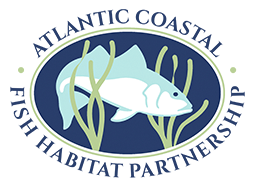Water quality is essential for aquatic organisms to eat, grow, and reproduce. For anadromous species like river herring, which migrate from saltwater to freshwater to give birth, streams and rivers must be clean and free-flowing. When newly hatched young emerge from their eggs, they rely on high quality habitat including ample food and safe spaces to avoid predators.
The migration route from sea to streams has many obstacles, blocking fish passage. Dams, bridges, and roads prevent river herring from accessing suitable habitat where they can reproduce. In coastal New Hampshire, 33 of the 118 tidal stream crossing areas contain barriers to migration, and 80% highly restrict the natural flow of water. In addition, these blockages can cause flooding and safety hazards to the local communities, and sediment buildup behind them can pollute streams.
The New Hampshire Department of Environmental Service, in partnership with The Nature Conservancy, recently undertook an assessment of the state’s tidal crossings to help identify the most urgent projects for fish passage. In 2019, at one of the highest priority crossings, a 3-foot culvert was successfully replaced with a 16-foot span along Lubberland Creek in Newmarket. The design is focused on fish migration, expansion of salt marsh habitat, boosting plant growth, and improving the resiliency of the infrastructure. Because of this, it could be considered the ‘gold standard.’
As of now, $156,000 of the necessary $273,000 has been raised to apply the successes from Newmarket to other blockages in the state. Our goal is to support The Nature Conservancy in developing structural improvements for four culverts in the most need of attention. It costs approximately $60,000 to assess and design one crossing, but every little bit helps to restore migratory routes for river herring! To donate, contact Lisa Havel, the ACFHP coordinator ([email protected]).
Free Flowing Rivers in NH Factsheet
Photos provided by M. Latour and P. Steckler, TNC.







